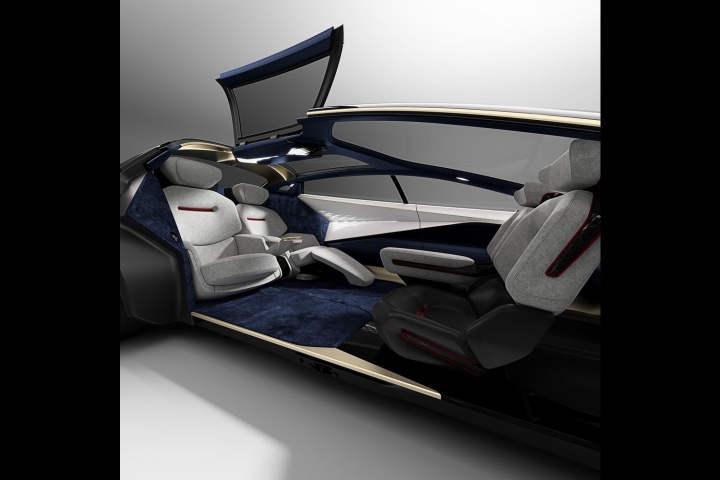What's the news?
Lagonda, an arm of Aston Martin named after a long-gone standalone motoring marque, is a label that has been apportioned to a variety of machines over the years - such as William Towns' striking, angular creation of the 1970s and for a Middle East-focused rarity called the Taraf.
But now Aston Martin wants to turn Lagonda into the world's first zero-emission (ZE) luxury brand and this is what the carmaker thinks vehicles in such a portfolio might look like. It's called the Lagonda Vision Concept and, following a debut at the Geneva Motor Show, Aston says production will start on a range of ZE electric vehicles (EVs) from 2021.
The Lagonda Vision Concept is shorter and lower than the usual top-end limousines, yet it can take a quartet of six-footers with little difficulty thanks to the ingenious packaging of its EV drivetrain - there's no need to cram in a big engine, gearbox and transmission system, which minimises the vehicle's footprint. It's also, as seems to be the case with all EVs destined to hit the streets in five years' time, an autonomous machine that can drive itself, up to Level 4. So, while there is a steering wheel for the odd occasions that the humans on board want to take control, said wheel can also retract into the dashboard, allowing the front passengers to swivel and face the rears in a lounge configuration. The Vision Concept's wheel can also switch from left- to right-hand drive, a useful feature.
The whole design is supposed to be more shocking and less organic than regular Aston Martin models, reinforcing Lagonda's status as futuristic and ZE, while the interior is fashioned to feel like anything but the cabin of a mere car. You'll also notice the Lagonda's doors open upwards and outwards at the back, allowing easy access to the massive cabin within. It will use solid-state batteries in its floor line to deliver up to 645km on a charge, can pick up an inductive charging field to re-juice its power and it'll have intelligent all-wheel drive that can send anything from 0 to 100 per cent of the torque to any given wheel according to demand.
Marek Reichman, Aston Martin's EVP and chief creative officer, said: "The Lagonda Vision Concept is an incredibly bold design statement. The electrification revolution means there is no longer any need for horse and carriage design, and our new concept shows the scope of design opportunities that open up once you no longer need to provide space for a large power source directly in front of the passenger compartment. In the Lagonda Vision Concept, the batteries occupy the floor of the car. Everything above that line belongs to us."
And, in what looks like a thinly-veiled swipe at a certain top-end company that might have something to do with Charles and Henry, he went on: "Lagonda has no need to occupy a huge amount of road space or make an ostentatious wealth statement. It is like comparing Concorde to the first-class cabin of a conventional airliner. By ditching traditional architecture like Parthenon grilles and massive frontal areas, and by using electrical power, Lagonda design can still be distinctive and luxurious without being grandiose. It offers its customers a thoroughly modern, emission-free form of super-luxurious mobility."
Aston's CEO, Dr Andy Palmer, was slightly more conciliatory when he said: "For owners of true luxury cars, autonomy has existed for over a century, in a carbon-based form called a chauffeur. We imagine most Lagonda customers will choose to be driven, but whether by a person or a computer will be up to them. And if they want to drive themselves, the car will ensure that is a delightful and memorable experience too. Lagonda will provide that choice."
Anything else?
Alongside the Lagonda Vision Concept in Geneva were two 40 per cent scale models, of a coupe concept and an SUV concept. These show how the Lagonda design language could be adapted for the future - and hint at the varied array of EVs Aston is keen to build up under this umbrella marque.







